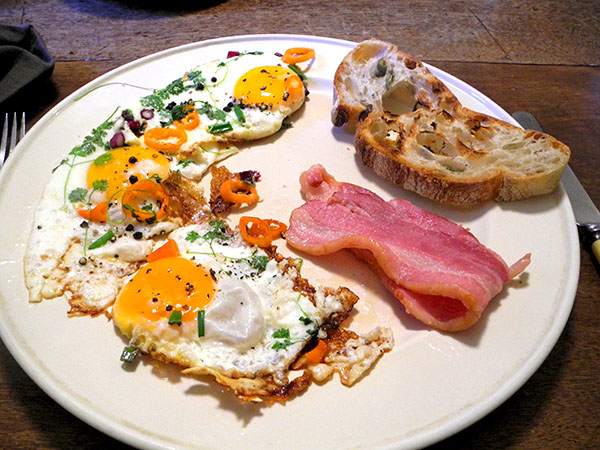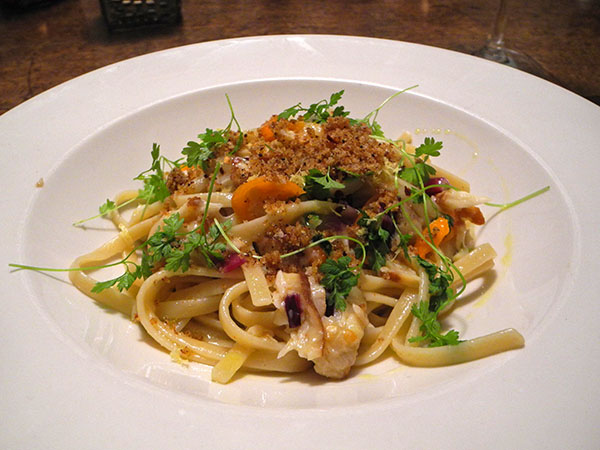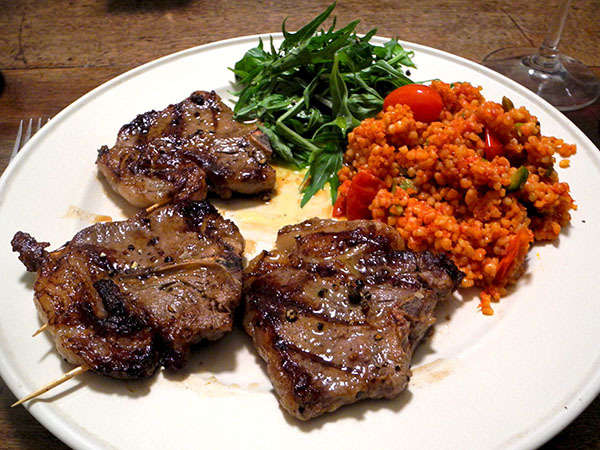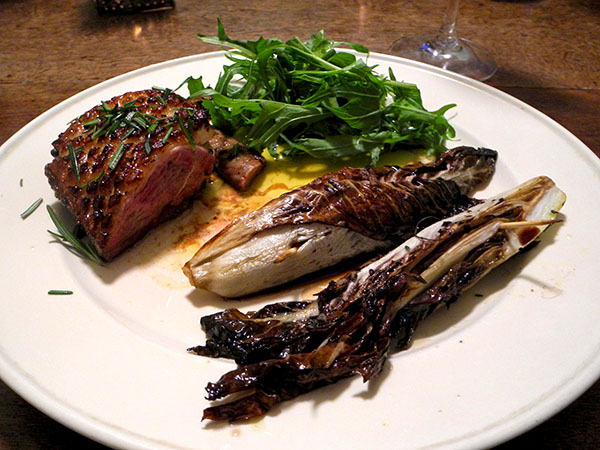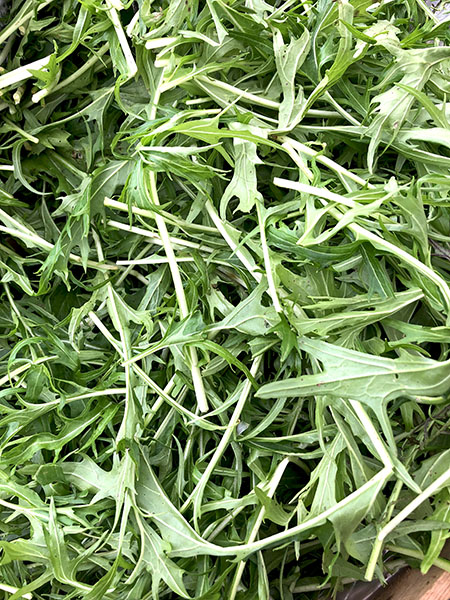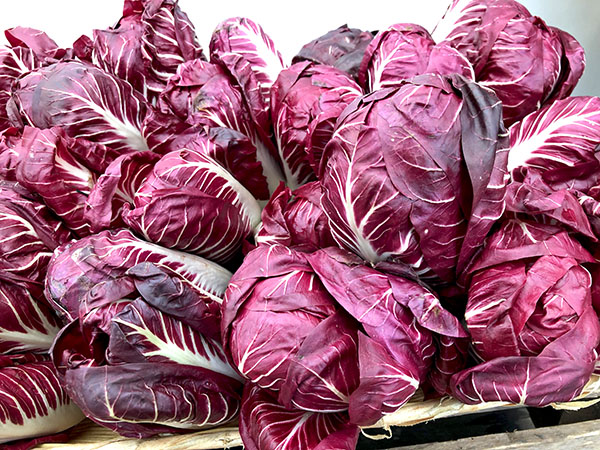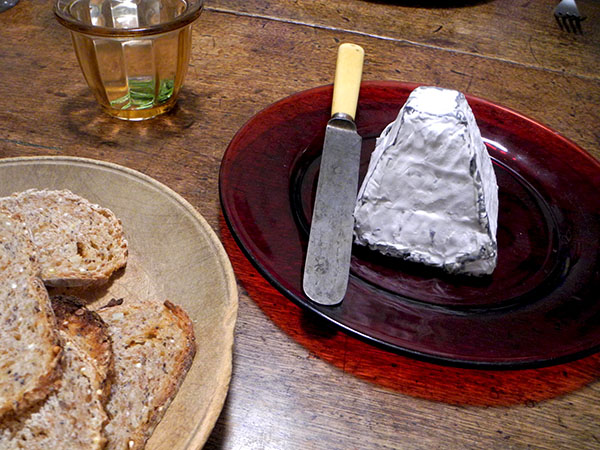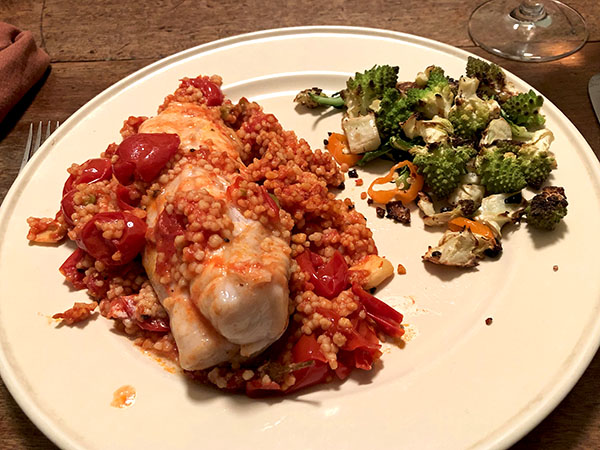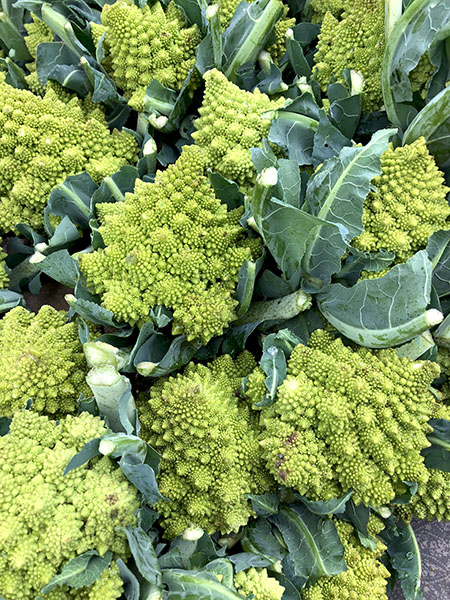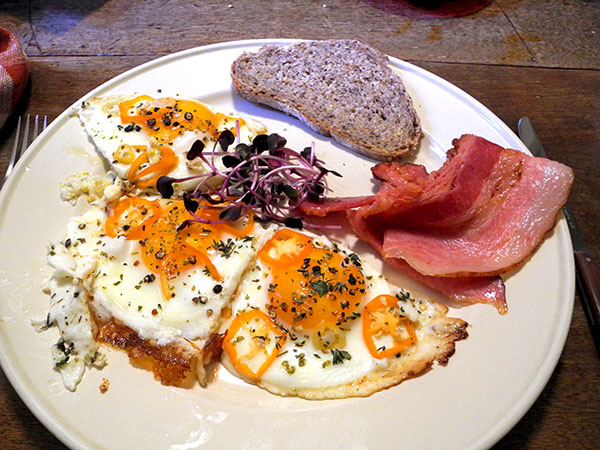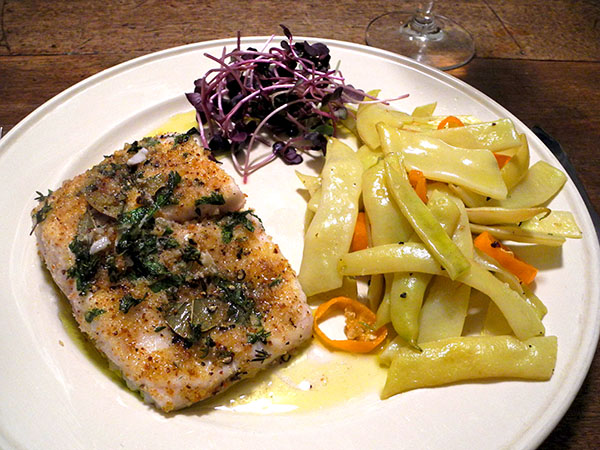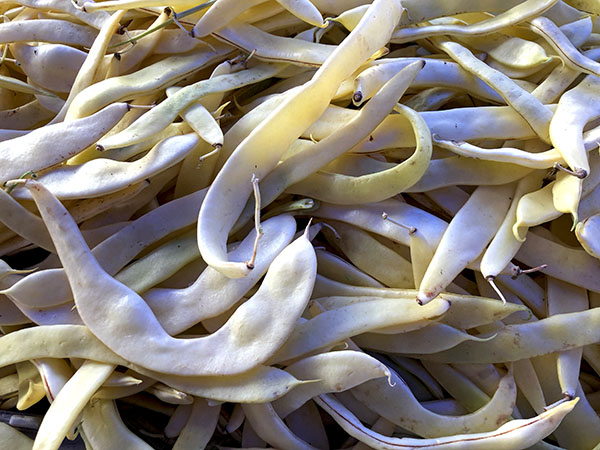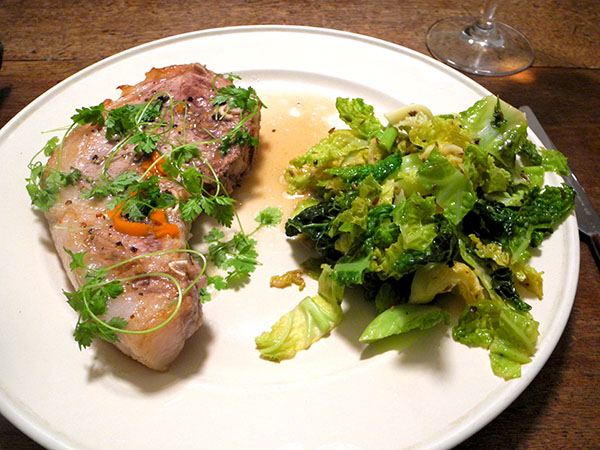
What can I say? A very juicy pork chop and an equally succulent cabbage, two of my favorite things, and here presented very simply.
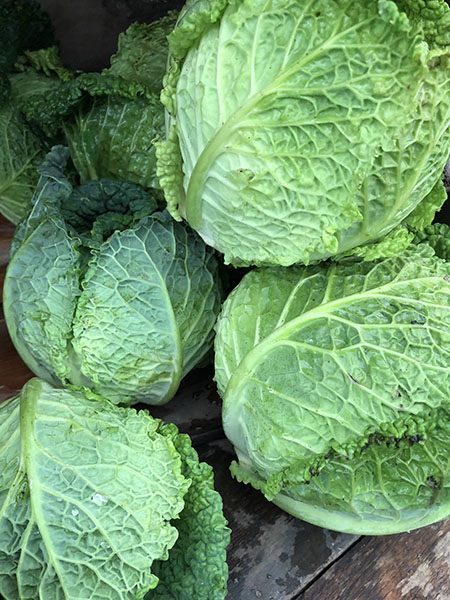
- two fresh 9 or 10-ounce pork chops from Flying Pigs Farm, thoroughly dried, seasoned with sea salt and freshly-ground black pepper, seared quickly on both sides inside a very hot, heavy enameled cast-iron pan, one small, fresh floral-scented heatless orange habanada pepper from Norwich Meadows Farm, chopped, scattered on the top surfaces before half of an organic Whole Foods Market lemon was squeezed over them, after which it was left on the surface of the pan between the chops, the chops placed inside a 425º oven for about 14 minutes (flipped halfway through, the lemon squeezed over the top once again and once again replaced inside the pan), the finished chops removed from the oven and arranged on 2 plates, some micro chervil from Two Guys from Woodbridge arranged on top, some of the pan juices poured over the top of the chops, the remainder poured into a sauce boat and placed on the table
- one small Savoy cabbage from Norwich Meadows Farm, washed, quartered, cored, sliced into one-half-inch ribbons, sautéed in a scant tablespoon of olive oil inside a medium heavy, tin-lined copper pot until wilted but still crunchy, stirring occasionally, seasoned with sea salt and freshly-ground black pepper, and a little more than a teaspoon of toasted cumin seed mixed in, finished with half a teaspoon of Columela Rioja 30 Year Reserva sherry vinegar, the mix stirred and cooked another couple of minutes
- the wine was a California (Napa) white, La Tapatia Chardonnay Carneros 2016, from Naked Wines
- the music was the Mozart and Da Pone 1790 opera buffa, ‘Così fan tutte, ossia La scuola degli amanti’, in a performance with René Jacobs directing Concerto Cologne and the Cologne Chamber Choir
